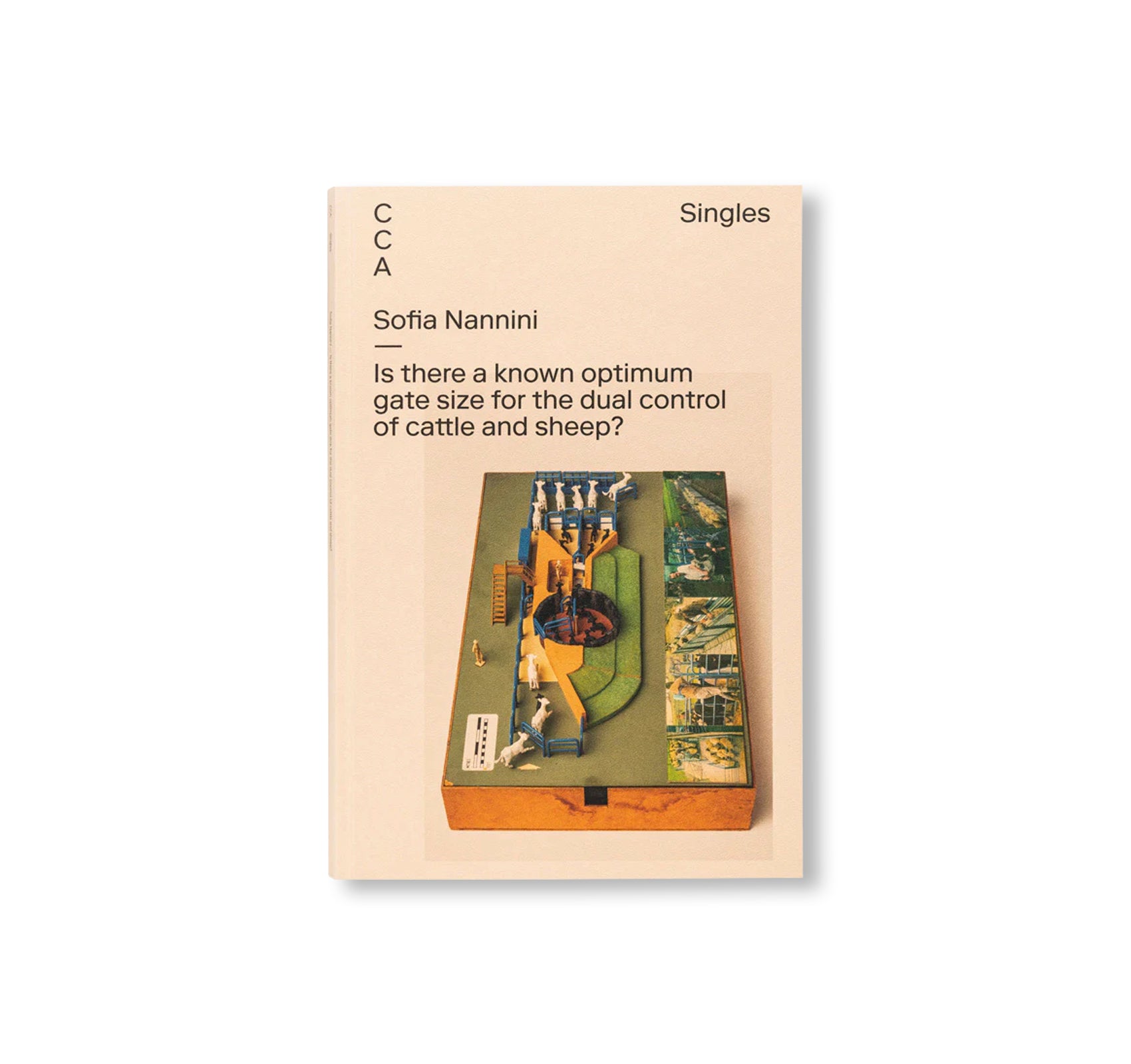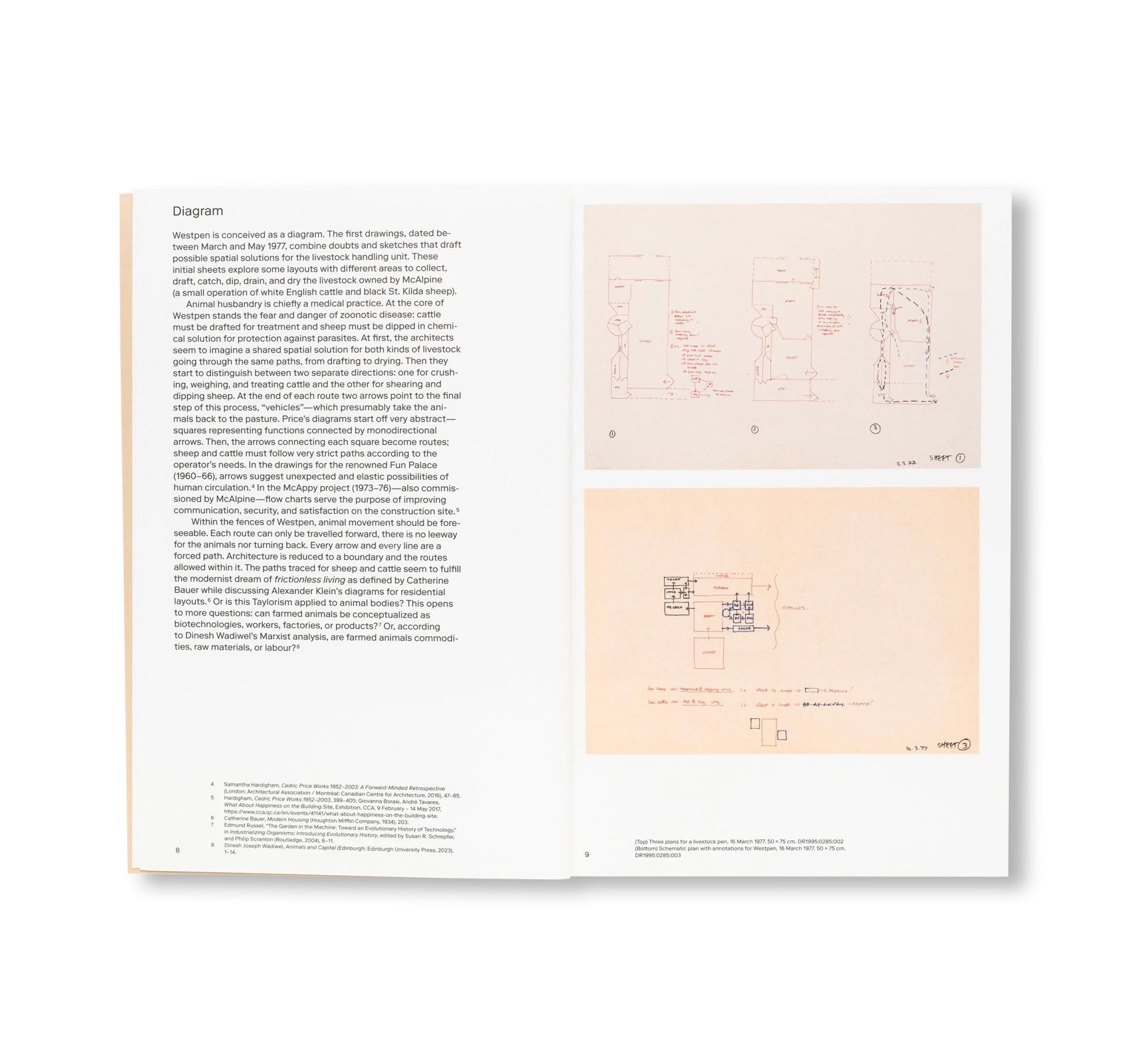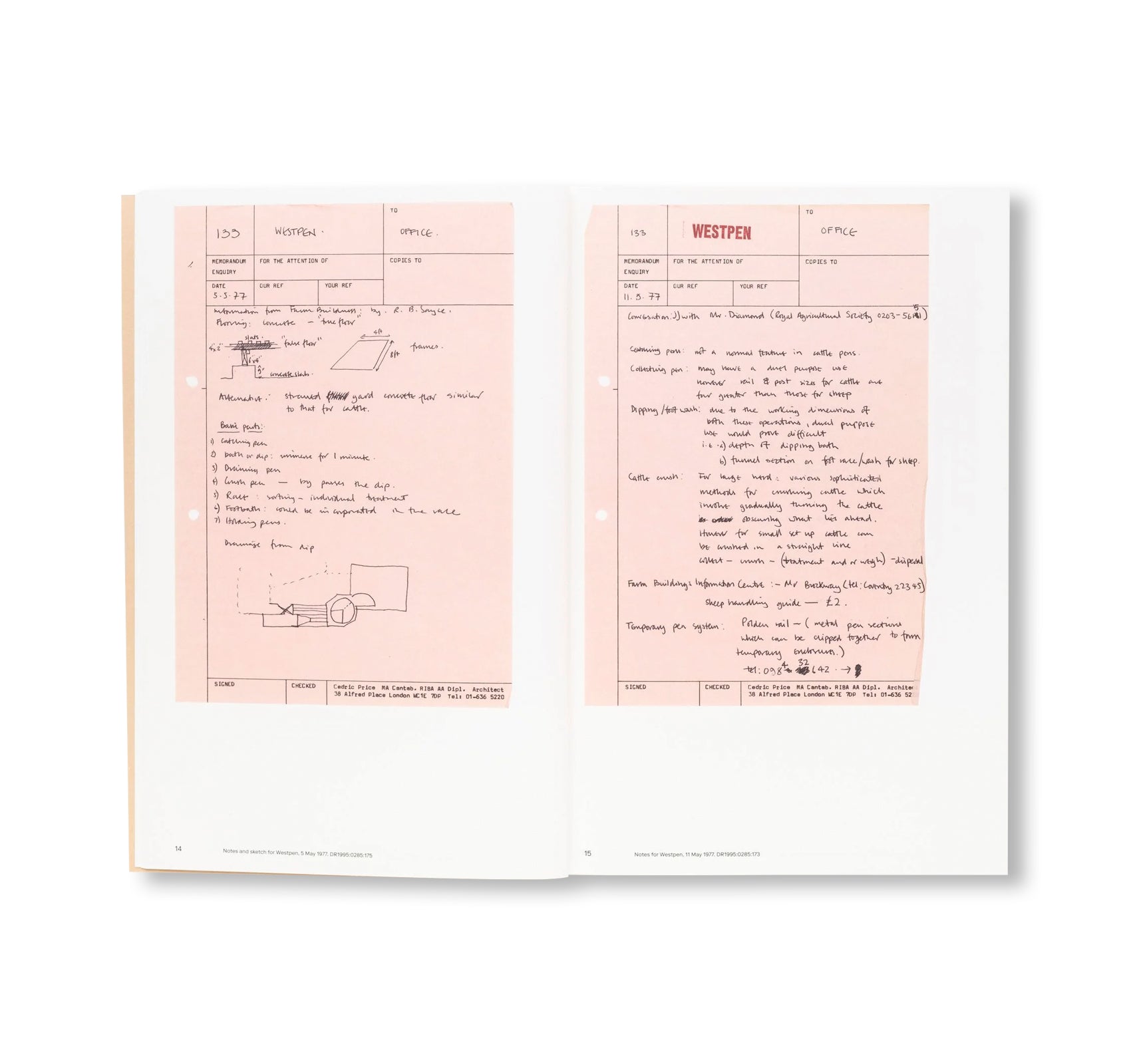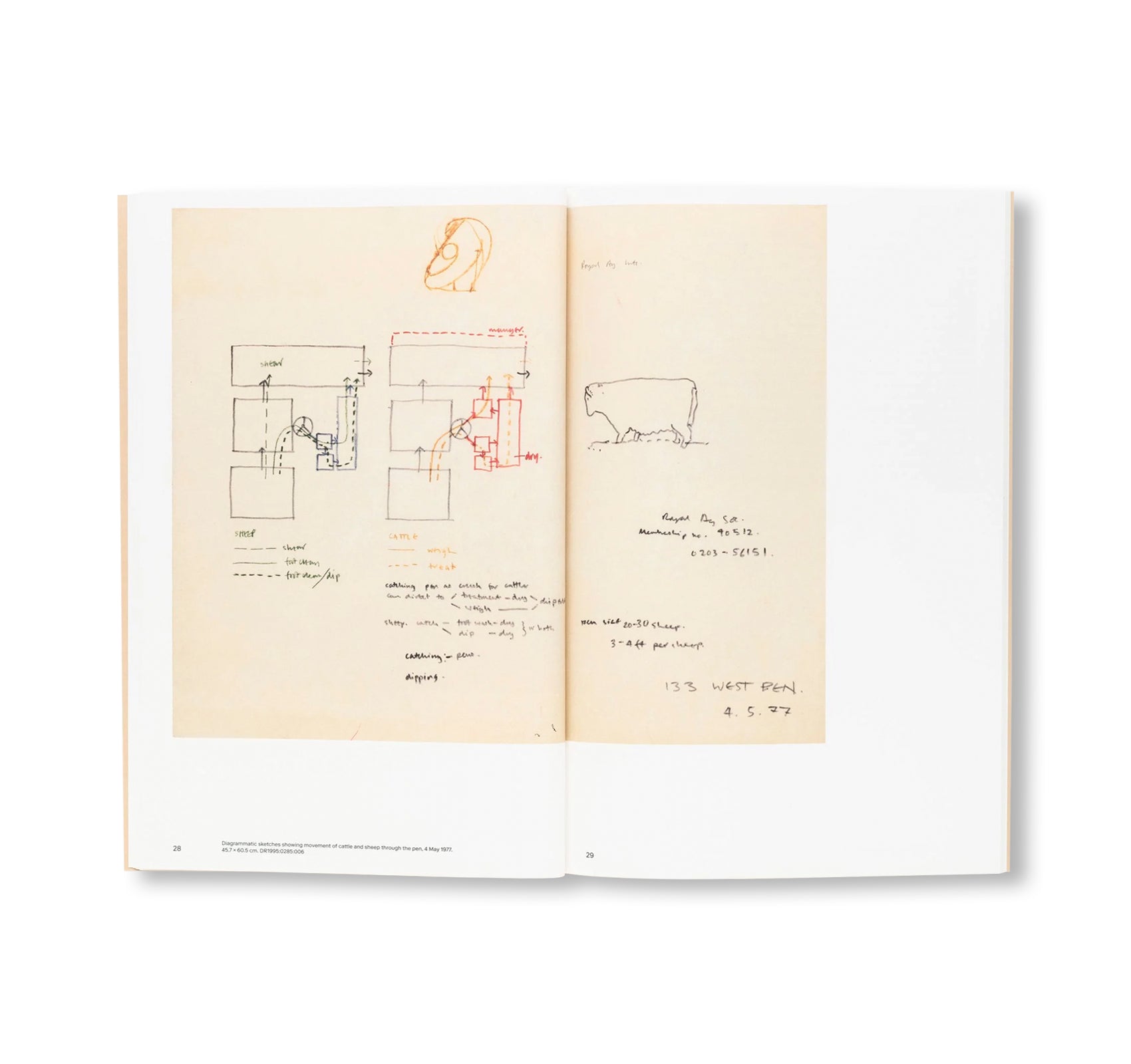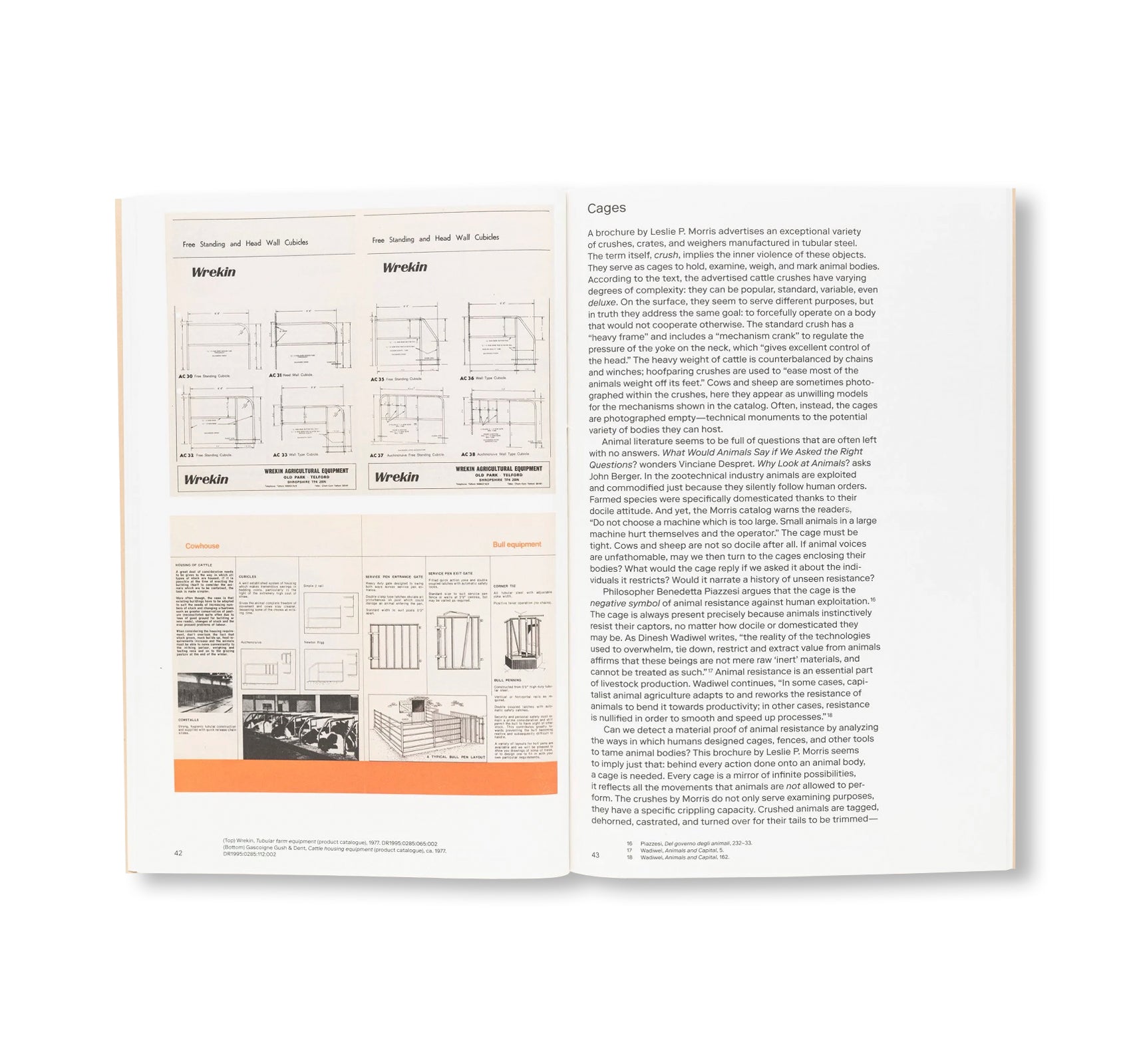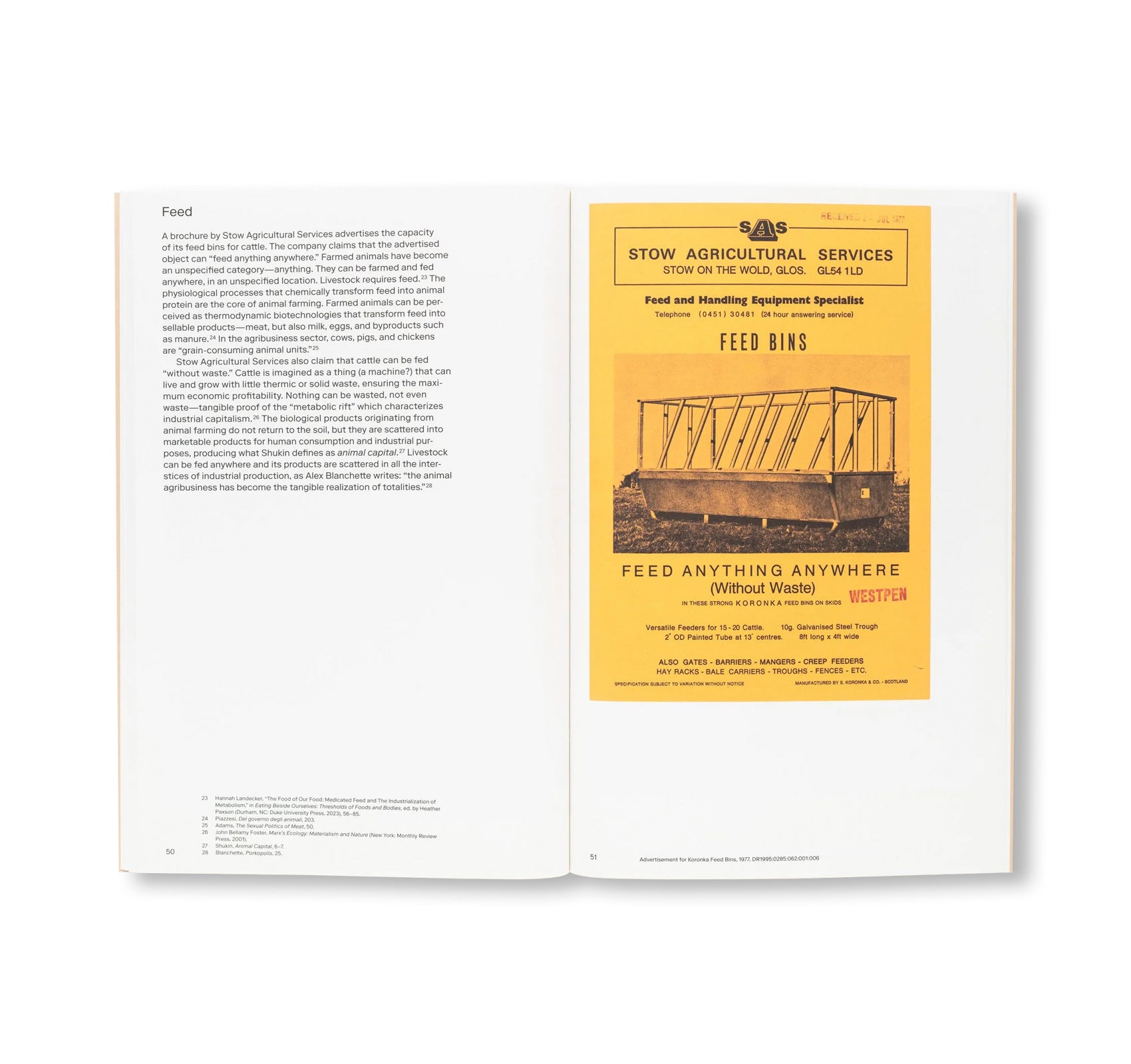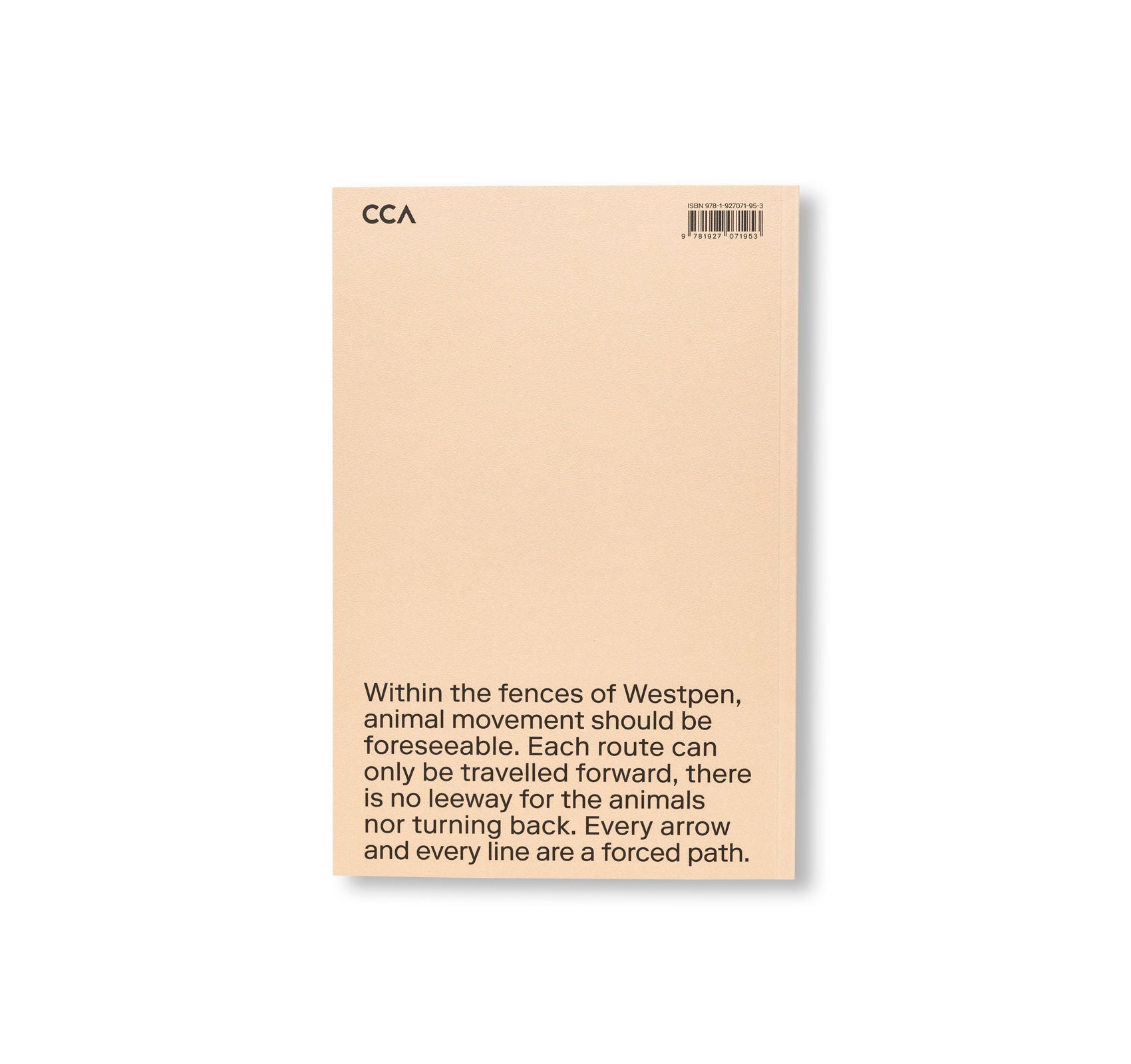IS THERE A KNOWN OPTIMUM GATE SIZE FOR THE DUAL CONTROL OF CATTLE AND SHEEP? by Sofia Nannini
モントリオールの建築ミュージアム、「CCA(Canadian Centre for Architecture、カナダ建築センターとも)」による「CCA Singles」シリーズの一冊。本書は、イタリア、トリノ工科大学で助教授を務める建築史家、ソフィア・ナンニーニ(Sofia Nannini)が手がける。
作者は、イギリス人建築家であるセドリック・プライス(Cedric Price)が遺したアーカイブ資料の中にある、小規模ながら代表的な資料群について論じている。それはプライスが「ウェストペン(Westpen)」と呼んだ、牛や羊を洗浄・計量するための、軽量で再構成可能な家畜用囲いの提案である。この設計とコンセプトは主に動物の動きとプログラムの柔軟性によって駆動されており、動物用として使用しない際には、単にゲートを取り外すだけで、田舎の家族向けのピクニックエリアへと変貌する。2023年度のリサーチフェローである作者は、まさにこの「非人間的存在の制御」という問題に焦点を当てる。プライスが関心を寄せた「非永久性」や「人間相互作用と個人の自由意志が持つ創造的可能性」という文脈において作者は、他の種より我々の種という前提を建築が永続化している責任を暴く。
Sofia Nannini discusses a small but representative collection of files within the Cedric Price fonds: the proposal for a light and reconfigurable livestock pen to clean and weigh cattle and sheep that he called Westpen. The design concept was largely driven by the movement of the animals and the flexibility of the program, suggesting that the pen could become a bucolic family picnic area when not used for the animals, simply by removing the gates that control them. Nannini, a 2023 Research Fellow, focuses precisely on this question of control of the non-human: in the context of Price’s interest in impermanence and the creative potential of human interaction and individual free will, Nannini exposes architecture’s responsibility in perpetuating the assumed dominion of our species over others.
